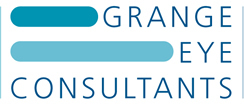What is Computer Vision Syndrome?
Computer vision syndrome describes the symptoms that we get when using screens,
computer screens or gaming screens.
How the computer screen affects our blinking rate.
There have been some fascinating studies videoing people who are gamers or who use computer screens. And it’s shown that they blink three to five times in a minute when the normal blink rate is 20 to 30 times a minute. In addition, when they blink, they don’t completely close the eye; they only two-thirds blink. As a result, the surface of the eye isn’t properly lubricated. Imagine if you’re
trying to outstare somebody. When you outstare somebody, you can feel your eyes getting drier and drier, and in the end, you’re forced to blink. And this is exactly what’s happening with computer users and gamers; they’re staring at screens. Because they’re distracted by what they’re doing, they’re unaware of
the need to blink and they don’t blink.
What blinking does for our eyes.
Now, the surface of our eye is covered in tears. And the tear film needs to be perfectly clear in order for us to see and in order for the eye to feel comfortable. So the tear film has three layers; a mucin layer which is a sticky layer on the surface of the eye, a watery layer which makes up 90% of the tears, and then an oil layer. And the oil layer’s on the surface of the eye like an oil slick. And if we don’t blink, that oil slick breaks up and the tears evaporate. The watery tears evaporate and that’s known as evaporative dry eye syndrome which is what computer vision syndrome is.
The impact of a slower blinking rate.
So as a result, people will say, towards the end of the day, my eyes start to feel gritty and sore. Or they may be contact lens wearers and say, I’m fine with my contact lenses but at the end of the day when I get home, I’ve just got to take them out. And this is computer vision syndrome. The other thing that people are unaware of, they may not be aware of their eyes being dry, but their vision being blurred. And what’s happening there is the surface of the eye isn’t covered by the nice, healthy tear film, but it’s half wet and half dry. And that’s like looking through a car windscreen with drizzle; you can’t see through it. So you put the wipers on, but because it’s greasy because you’ve all that sticky mucin there and the oil isn’t quite right, even though you blink, you can’t see properly. It’ll help for a second or two but doesn’t really resolve the problem.
So what do we do about computer vision syndrome?
Well, firstly, we need to educate people that that’s what’s happening. We need to explain to them the reason why they’re getting the symptoms towards the end of the day because these patients don’t have a fundamentally dry eye. When they’re on holiday or a weekend, they’re not getting the symptoms; it’s just when they’re staring at the screens. So we need to educate them on what’s happening and that helps because they will take breaks.
Educating people to give their eyes a break from staring at the screen and encouraging to blink more.
The Americans say you should… They’ve advocated every 20 minutes, you should for 20 seconds stare at something 20 feet away and blink and give yourself a break. So educating people what’s happening so that they blink more frequently and when they blink, they close their eyes fully so that they don’t have that two-thirds blink. And in addition, many patients will benefit from artificial teardrops so that they can use those throughout the day if they’re very symptomatic to try and make their eyes more comfortable when they’re using the screens. Because the reality is we live in a world of IT and computer screens and people can’t modify their jobs or what they’re doing, but they can modify their behaviour when using the screens.
About the Author

Mr Robert Morris
BSc(Hons), MB BS (Hons), MRCP, FRCS, FRCOphth
Consultant Ophthalmic Surgeon
Robert Morris trained at St Bartholomew’s Hospital part of the University of London. He graduated with Honours in his final examinations. Robert completed his post-graduate ophthalmic training at the renowned units in Oxford Eye Hospital and London’s Moorfields Eye Hospital. Within the NHS, he has had a high volume cataract surgery practice and performed over 12,000 cataract procedures. He has an interest in squint surgery and is a national expert in this field. In addition to his NHS work, Robert manages a successful independent private practice. He continualy updates his training to keep abreast with the latest technology and techniques in refractive surgery.
